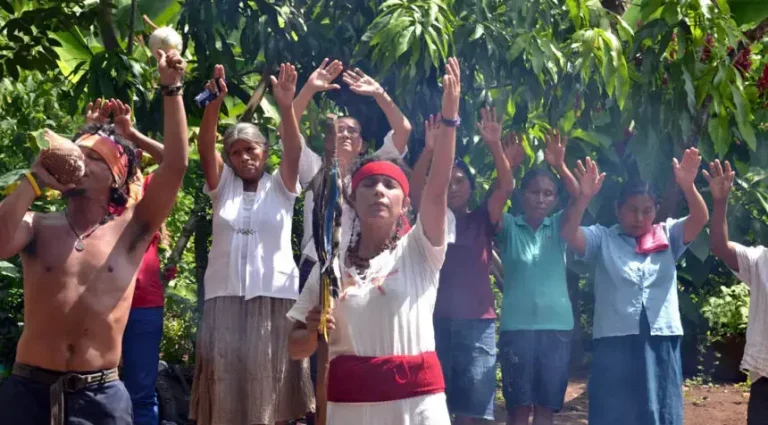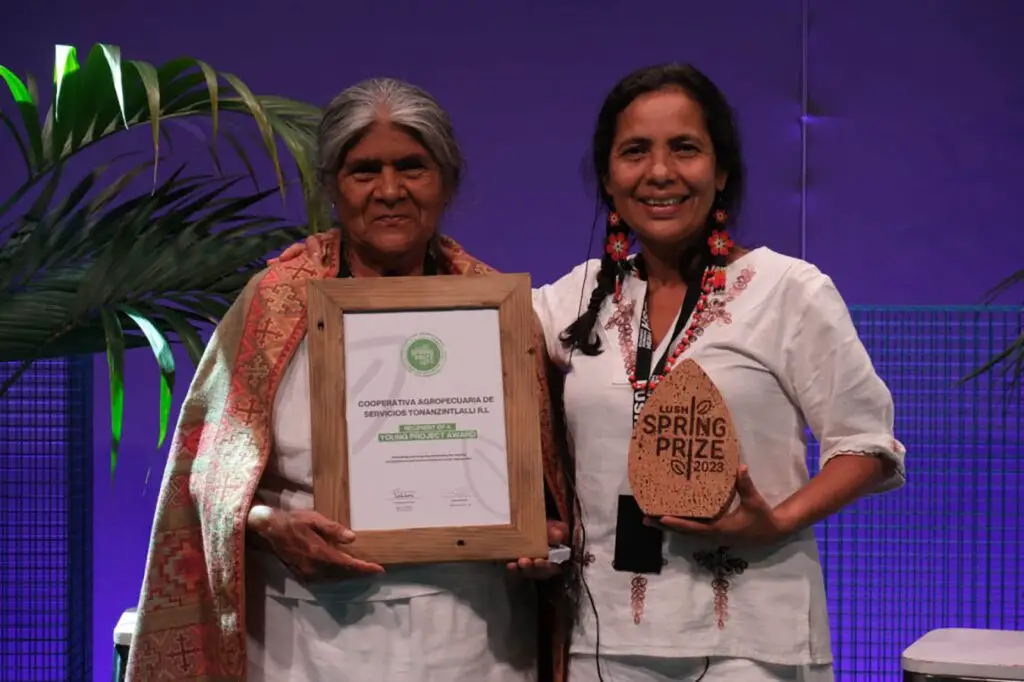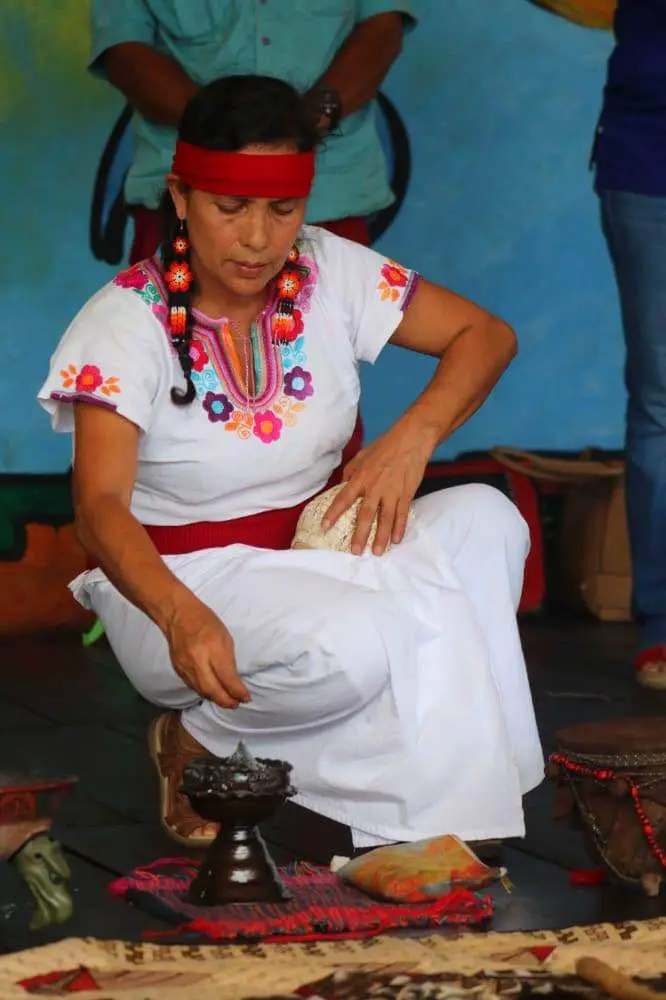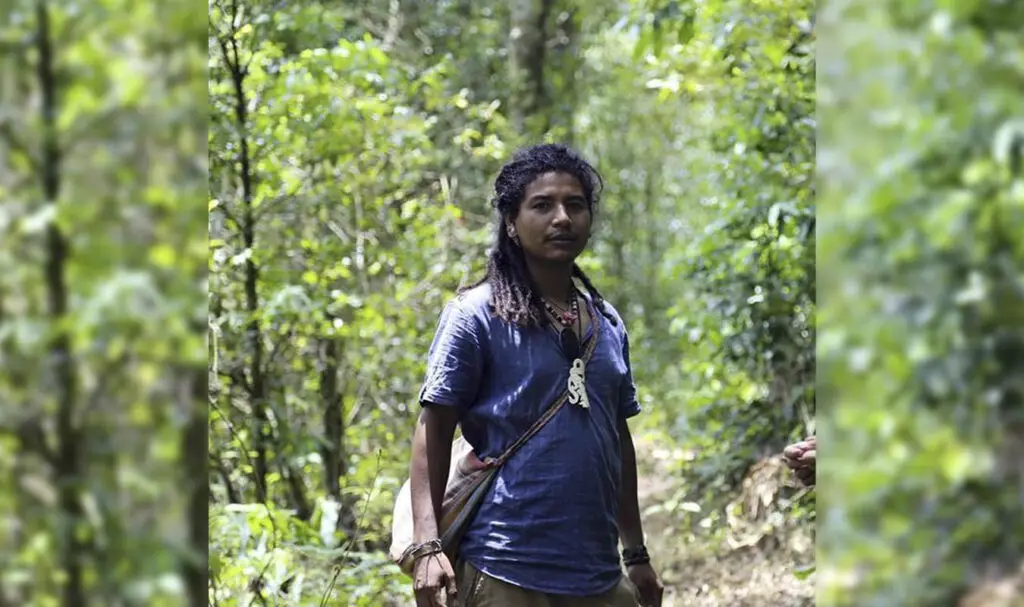5 de abril 2024

A New Opposition Candidate Challenges Venezuela’s Maduro

PUBLICIDAD 1M
PUBLICIDAD 4D
PUBLICIDAD 5D
Indigenous people, community leaders, and experts share their visions of Nicaragua’s most ancient cultures.

Maritza Centeno en una ceremonia indígena. Foto: Mosaico CSI | Cortesía
When a baby is born in the community of La Laguna, some 2.5 miles from the town of San Ramon in Nicaragua’s north central region, the mother presents the baby to the full moon. It’s an ancestral rite that takes place before the newborn baby is two months old. In the ceremony, the mother invokes the “protective energy” of nature. This tradition has been passed down for generations in intimate ceremonies held among the indigenous people of Matagalpa – a culture that’s among the oldest in Nicaragua.
The one telling us the story is Maritza del Carmen Centeno, 50 years old and the mother of two children. She’s a member of the Indigenous Movement of Nicaragua and a firm believer that her people’s traditional knowledge is synonymous with wisdom.
That would seem like a declaration of principles, but Maritza Centeno’s personal history concretely supports these ideas. In 2012, she founded the Tonanzintlalli Agricultural Cooperative and promoted a project for planting coffee trees on small plots of land belonging to women. Her efforts and those of the cooperative were recognized in Berlin, Germany, with the 2023 Lush Spring Prize for social and environmental regeneration. The project combines technical knowledge about production, Maritza’s career in marketing and advertising, and the beliefs of their ancestors.

A short video about the work of the Tonanzintlalli Cooperative can be found at: https://springprize.org/shortlisted/cooperativa-agropecuaria-de-servicios-tonanzintlalli-r-l/
According to the book Ethnology and Anthropology by French authors Philippe Laburthe-Tolra and Jean-Pierre Warnier, identity is “a cohesive principle internalized by a person or group, that allows them to differentiate themselves from the rest, to recognize themselves and be recognized.”
Talking about identity might appear only marginally relevant in a convulsive world, if you think that focusing on the ideas of the indigenous leader means putting aside other concerns such as economic survival, hunger, war, terrorism, or political crises. However, Maritza Centeno explains the existing connection between the indigenous cosmological vision of the earth, the ancestral knowledge of planting, music, dance, gastronomy, and natural medicine. All of these topics are essential to life.

Victor Manuel Centeno lives in the small valley of Siare, in the buffer zone adjoining the Apante Hill Natural Reserve. He makes temazcales – vapor baths of medicinal and aromatic herbs – whenever he notes “changes of energy.” These baths are also indigenous rituals, he notes, customarily used at the June or December solstices, or in the equinoxes of spring or fall.
But Victor Manuel has another name as well. To all who know him, he’s “Canek,” a name that in the Yucatan Maya language would be kaan eek, meaning black serpent. Although that may seem a terrible nickname, for the community members he’s a sukia, a consultant. He’s proud of his Miskitu heritage, and the knowledge of natural medicine passed down to him from his grandparents, as well as the knowledge he’s received from those he calls his “Matagalpa brothers.”

The “official” data regarding Nicaragua’s indigenous population is nearly twenty years old. Since that time, many questions have arisen: How many Nicaraguans are indigenous? What parts of Nicaragua do they live in? Are they the object of discrimination? Their history is always present, including the differences in the relations the indigenous communities wove with the Spanish conquistadores in the Pacific, the North and the Central region; and with the English pirates on the Caribbean coast.
The 2005 Population and Housing Census counted less than 500,000 people classed as indigenous, out of a total population of 5.4 million. Of those half-million Nicaraguans who identified themselves as indigenous, 33,604 were from Matagalpa, but less than 150 of them spoke their native language. Further north, in the nearby department of Jinotega, the statistic was only slightly higher: 36,958 people identified themselves as indigenous, of whom a little over 7.200 were Miskitus; 6,600 called themselves “Chorotega, Nahual or Mangue,” and just over 2,200 identified as Mayangna.
The difference between the two areas is that Jinotega also contains the Alto Wangki Bocay Special Zone where the Miskitu Indian Tasbaika Kum territories are, comprising 14 communities in Wiwili. In addition, the Jinotega department also includes 9 indigenous communities around the municipality of San Jose de Bocay, grouped as Mayangna Sauni Bu.
The lack of updated censuses has been noted by studies of the UN Economic Commission for Latin America and the Caribbean, such as the 2022 report authored by Laura Acosta and Bruno Ribotta, “Statistical visibility and participative mechanisms of the Latin American indigenous peoples” [United Nations, 2022]. The report indicates that during the decade of the 2000s, only 15 countries asked about indigenous identification in their censuses, while in the 2010 censuses it was notable that neither El Salvador nor Nicaragua included any measurement of this type.
Despite that apparent government indifference, indigenous vision and organization are very current topics among Nicaraguans. “The people here do recognize themselves as indigenous. Even those who aren’t, say they’re indigenous, in order to have the benefits like not paying land rental fees,” comments Victor Chavarria, ex-president of the Board of the Indigenous People of Sebaco. He sees land tenancy as a basic issue for his organization.
The Department of Matagalpa extends over 2,627 square miles, divided into 13 municipalities. Eleven of these municipalities include the presence of three of the 22 indigenous groups of the Pacific, North and Central regions: the Matagalpa people, the Sebaco people, and the Muy Muy indigenous people. Each one of these has their own territory, with land titles dating from 1723, 1724 and 1726 respectively, some 98 years before Nicaragua gained its independence. The Nicaraguan government reported this information in a document from the Attorney General’s office published in January 2018.
Mosaico CSI, an independent local digital media team based in Matagalpa, reviewed 34 texts and official documents, including books, monographs, and articles, and spoke with indigenous people and some of their leaders in different communities, along with historians, archaeologists, and anthropologists from Matagalpa, in order to learn the history of the Matagalpa indigenous people and the deep significance of the way they view the cosmos. The result has been a portrait that leaves their legacy clear, but unfortunately paired with a history of discrimination. Nonetheless, their influence on history is undeniable, according to the experts interviewed.
Sayda Liseth Hernandez a 41-year-old economist originally from the community of Siare admits that she used to call herself a mestizo. Now, as an adult, she recognizes her indigenous roots. She observes: “the colonization, plus the modernization, have caused people to be ashamed of their roots and to go on forgetting them.”
Others blame the impact that the disorganization of the indigenous groups may have had. Miguel Angel Gomez, president of the Indigenous People of Jinotega and assistant coordinator of the National Council of Indigenous Peoples, points to another reason: poor administration of the assets has also caused the indigenous people to stop self-identifying as indigenous, and even to distance themselves from the formal and traditional structures. To him, this is an essential element.

The indigenous people of Sebaco, Muy Muy, Matagalpa, Jinotega and other groups from the Central, North and Pacific regions of Nicaragua have had serious conflicts; there have even been times when two or more Directive Boards existed simultaneously. Now however, most of them are controlled by the governing Sandinista Party.
“That’s part of the loss of identity, because at times we’re not capable of managing our resources and that’s a very serious problem,” Gomez admits during an interview with Mosaico CSI. He defines himself as a Chorotega and asserts that the indigenous lands of his community were acquired with “gold coins.” The land title they have is matriarchal, because it was the women who traveled from Nicaragua to Guatemala, seat of the military government at the time, to assure the ownership of the lands.
The original report in Spanish with photos can be seen at Mosaico CSI. This article was published in Spanish in Confidencial and translated by Havana Times. To get the most relevant news from our English coverage delivered straight to your inbox, subscribe to The Dispatch.
PUBLICIDAD 3M
Medio de comunicación digital local independiente, con noticias, reportajes y perfiles sobre los departamentos de Matagalpa y Jinotega. Su labor ha sido reconocida con varios premios locales y nacionales a la excelencia periodística, entre ellos el Premio Nacional de Comunicación para los Derechos de la Niñez y Adolescencia, y el Premio Nacional María José Bravo.
PUBLICIDAD 3D